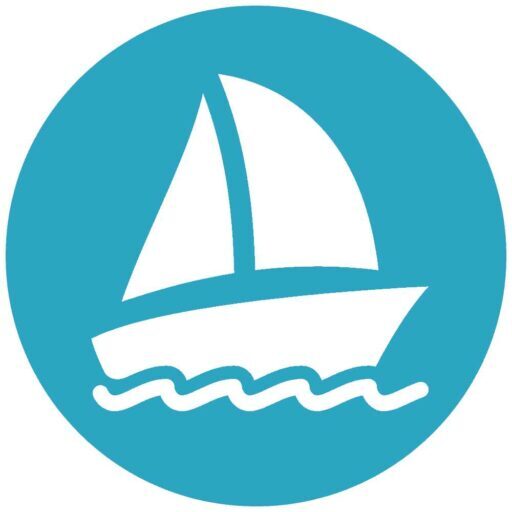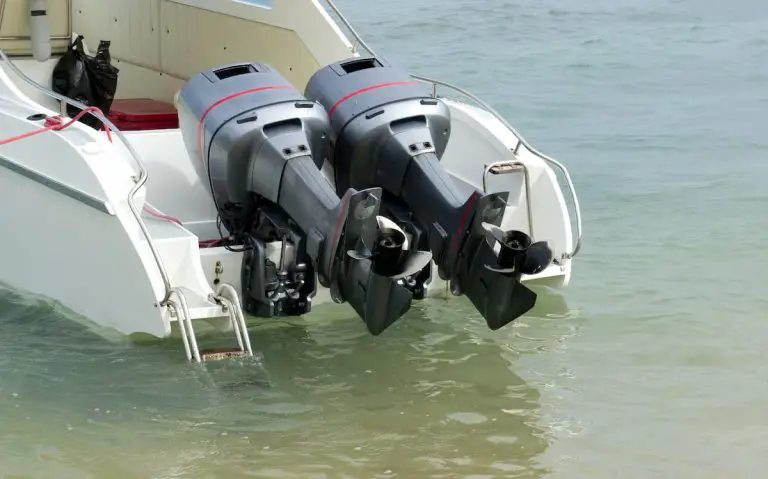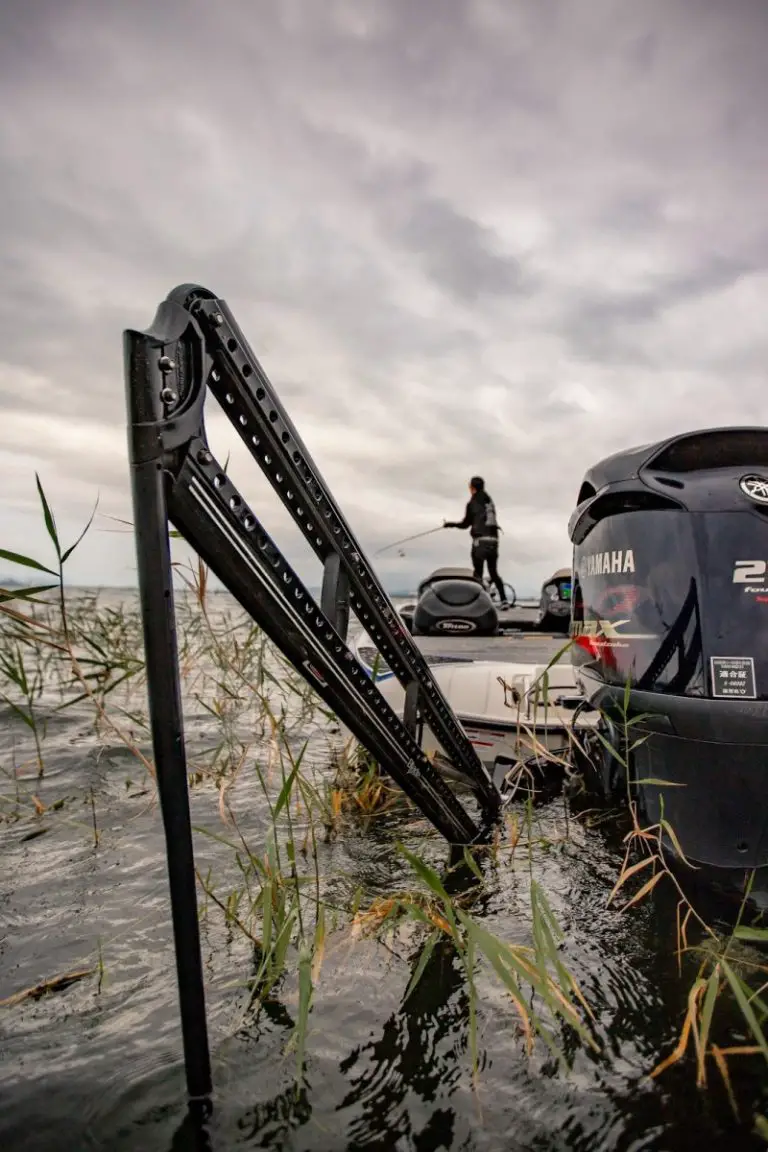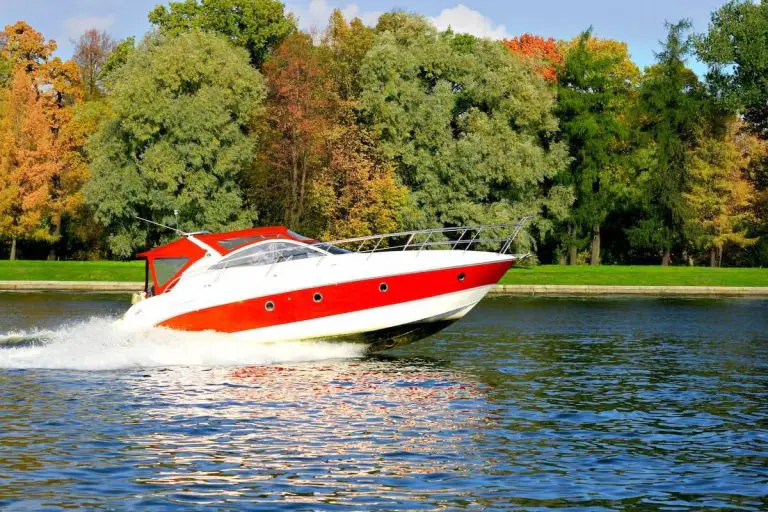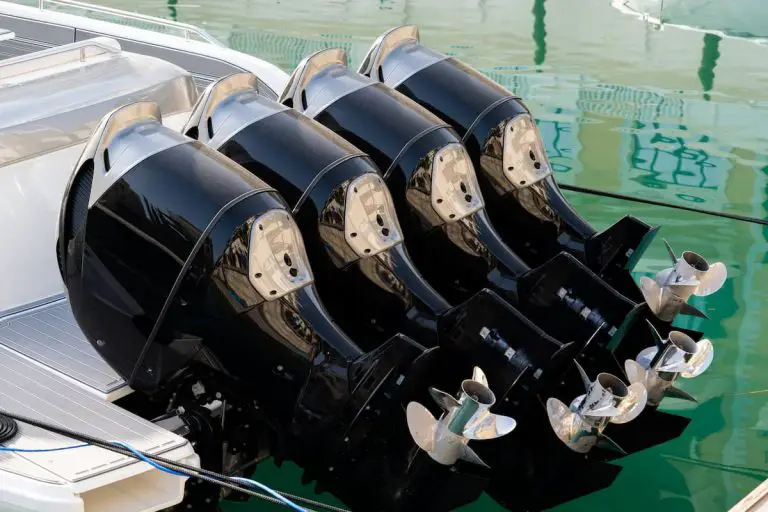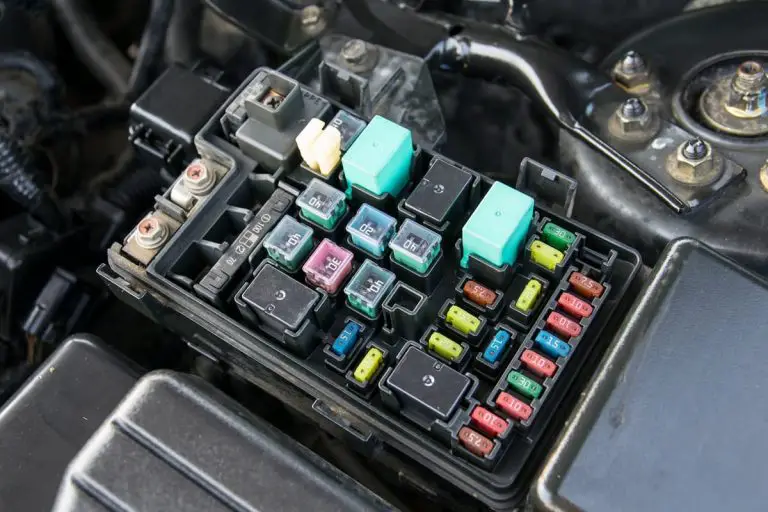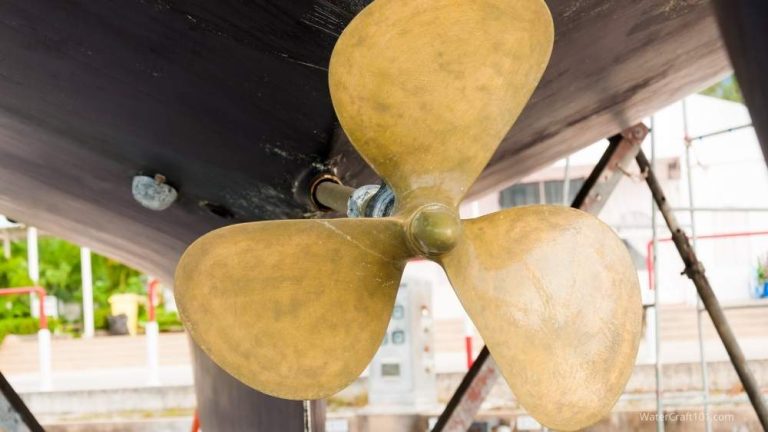Can You Power Boat To Hawaii? (Factors to Consider)
From the west coast, Hawaii is approximately 2,500 miles away. Though no ferry boats operate on this route, there are a few cruise services, which can take you to the beautiful volcanic island chain. But what if you already have a boat and you’re wondering if you can power boat to Hawaii yourself?
While it is possible to power boat to Hawaii in a privately owned craft, crossing the Pacific Ocean will require an experienced captain and a well-tested, and seaworthy boat. It will typically take 2-3 weeks to motor boat to the Hawaiian Islands from the west coast on a recreational vessel.
If you’re all fired up to leave for Hawaii on a powerboat, you’re going to need a useful guide. This article will tell you about some of the things you’ll need to consider before deciding to sail to Hawaii in a powerboat, so keep reading until the end for plenty of useful information.
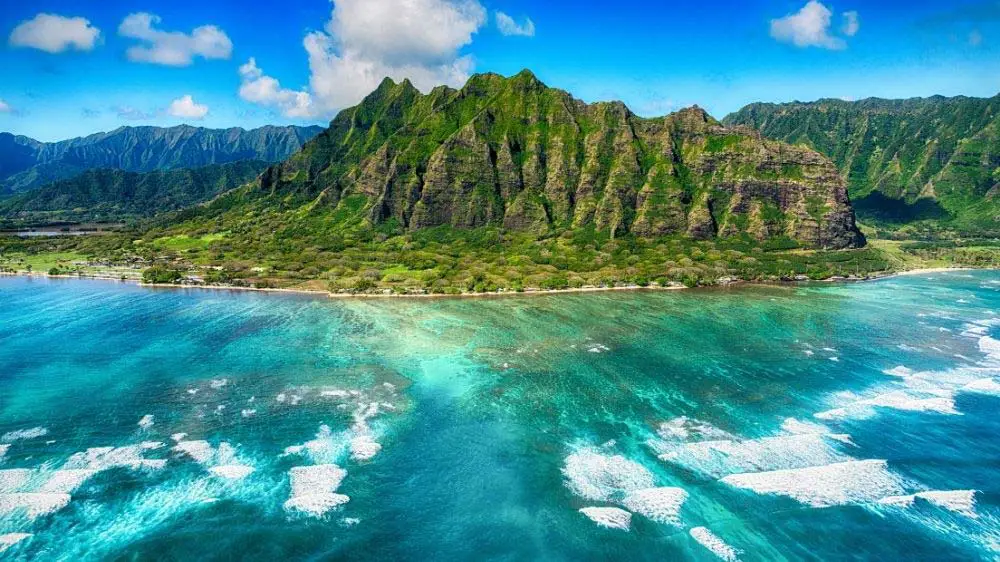
Planning The Journey To Hawaii Via Power Boat
If you’ve made up your mind to cross to Hawaii in your own boat, there are some very important things you’ll need to consider before beginning this open sea adventure. Cruising across a large open body of water is a lot different than boating close to shore. Here’s what you’ll need to do and have prior to sailing day.
● Calculate The Fuel Required To Get To Hawaii in Your Boat
Think about it – if you run out of fuel in the middle of the Pacific Ocean, you’re doomed. If starting from a California port such as San Francisco, a boat will require a minimum of 2,000 gallons of fuel (or more) to reach the harbor in Honolulu on the Big Island. So knowing the true mileage of your boat per gallon is crucial to your success.
On top of that you’ll need to carry plenty of extra fuel (just in case). What would happen to an aircraft that only had just enough fuel to get to its destination under perfect conditions, if halfway there it ran into a headwind?
You should view a boat traveling thousands of miles across the Pacific Ocean to Hawaii from a similar perspective. During such a long journey, one might encounter winds or storms that push your vessel off course. What happens if you don’t have enough fuel? Hopefully, a coast guard rescue, but that far out in the Pacific and I wouldn’t hold my breath for rescue, so best to be fully prepared.
● Calculate The Amount of Food Required For a Long Sea Voyage
Sure, maybe you can do some fishing along the way but regardless your going to need to carry plenty of food for every person aboard your personal watercraft. Much like the fuel situation, you’ll want to carry extra food in case your journey takes longer than you expect due to unforeseen circumstances.
And, it’s not just food you’ll be needing! Even more importantly, you’ll also require enough freshwater. Assuming that you’ll reach Hawaii in 3 weeks, we recommend carrying enough supplies for at least one month at sea.
Avoid carrying perishable foods and stick with long-lasting items. Food stores high in simple carbohydrates or items rich in glucose are highly preferred, as they will give you plenty of energy for their size and weight.
As mentioned earlier, you can also consider carrying a fishing rod or other gear for fishing. Finally, multiply the supply requirement by the number of people on the voyage. And don’t forget to pack extra on top of the extra, just in case!
The main takeaway of these first two points are that not just any boat will have the range or carrying capacity to pull off a trip of this magnitude. You boat will need to be large enough to have the storage and fuel capacity necessary for the trip.
This is not the trip for a small motorized vessel. Something much more akin to a mid-sized to large yacht will have the capacity to make the cruise to Hawaii.
● Mechanical Boat Checkup & Inspection
Make sure that the boat’s engine, electronics, and other mechanisms are in perfect condition. If possible, pack up any extra spare parts (hopefully not necessary) that you might require if push comes to shove.
You’ll also need to make sure to that your GPS, radar, radio, satellite phone, etc. are all in excellent working order as you’ll be relying on these items with your life. Carrying flares is also a wise idea in case you need to signal approaching craft for rescue.
● Prepare A Crew
Planning to sail alone? Not a good idea! You’ll want to have a team of at least 3-4 members ideally. These people will be there for you to assist in the voyage, help, and have your back in times of emergencies.
If you don’t have anyone lined up to sail with you, you may be able to find a crew member or two willing to exchange their services for transportation.
Prepare a schedule and divide the duties and time shifts accordingly. If possible, you can also consider joining a group of multiple powerboats making the trip (instead of just one) and sail together as that’ll be safer. Try looking for boating groups on MeetUp.
Important Points To Ponder Before Motor Boating To Hawaii
- Avoid boating at night, dusk, and dawn. These times provide difficult visibility. On the other hand, the ocean is deep, so anchoring in place may be impossible, and a boat can drift a long way at night when not anchored. There is much to consider when weighing the risks versus the benefits.
- Ensure that at least one or two people are awake while others are sleeping. There should be at least one person on watch at all times. It is critical if you are maneuvering your vessel through any shipping lanes. Having a medium or large powerboat won’t help you if your ship faces a collision with a giant freighter or cargo ship.
- Heatstroke is a real danger. Carry sunglasses, sunscreen, cap, etc. Ensure that everyone drinks enough freshwater to avoid heat or sunstroke.
- Always sail at a safe speed. Avoid speeding in order to reduce the sail time. Pushing too hard can harm your engine or cause unnecessary boating accidents.
- Make sure you decide the route before leaving for the destination. Take into consideration how the direction of the wind will positively or negatively influence the route. You should consult with an expert to finalize your planned navigation route (based on the wind’s prevalent direction).
Challenges While Sailing To Hawaii
Sailing to Hawaii means you’ll be in the Pacific Ocean, which itself is somewhat scary and adventurous at the same time. While on your route to Hawaii, you’re going to face several tough challenges, there are plenty of threats smaller boats may encounter. So what are those? We’re going to discuss them in this section.
1. Be Aware of Dangers From Marine Animals
Powerboats or small boats are highly vulnerable to quite a few threats from aquatic life. According to a study, various forms of sea life in the Pacific can cause potential problems. These animals include whales, tuna, sharks, leatherback sea turtles, northern elephant seals, California sea lions, etc.
It isn’t likely most of these sea creatures will bother you in a larger boat. But, if you have a small dinghy attached to your larger ship and decide to go out for a break to fish or swim, beware of big ocean creatures.
Large sharks and other bigger sea creatures are found in the Pacific, and as you are out in the middle of the ocean, a rescue from a shark bite could mean you bleed to death days before help arrives (assuming you survive to board your primary vessel).
For protection against jellyfish, apply repellant, which typically consists of an extract of plankton. Similarly, there are some remedies for protection against different types of predators (i.e. shark repellant).
There is also the possibility of accidentally hitting the aquatic animals with your boat. Whales tend to be curious about boats and may swim very close. Sometimes they rub against the boat, and if there’s a propeller in motion, it can not only hurt the whale, it could also render your prop or engine useless.
2. Mechanical Failure
You’ll have to be well-prepared to tackle any mechanical issues arising in the middle of nowhere. You must know how to fix the common problems that can arise in your power boat.
Furthermore, ensure that you have full knowledge of your boat before leaving for Hawaii. Also, ensure that the boat is up to the challenge. It’s a smart idea to have your vessel professionally inspected before attempting such a voyage.
3. Lack Of Knowledge
Lack of knowledge can make you clueless about what to do in a given situation. If you’re not a veteran ship captain, there can be several situations where you might make a costly or even fatal mistake. Again, this type of voyage is not something a novice should attempt.
For instance, what to do if something breaks? What if you run out of fuel in the middle of your journey? Learning survival techniques will be a significant advantage, if not a life-saving one.
4. Other Natural Challenges
Other natural challenges include storms, rains, extreme weather conditions, dusty air, etc. Since you’ll be cruising your powerboat under direct sunlight, heatstroke is somewhat common as you’ll be spending most of your day outside. Make sure you’re well-prepared in advance to tackle these natural challenges as well.
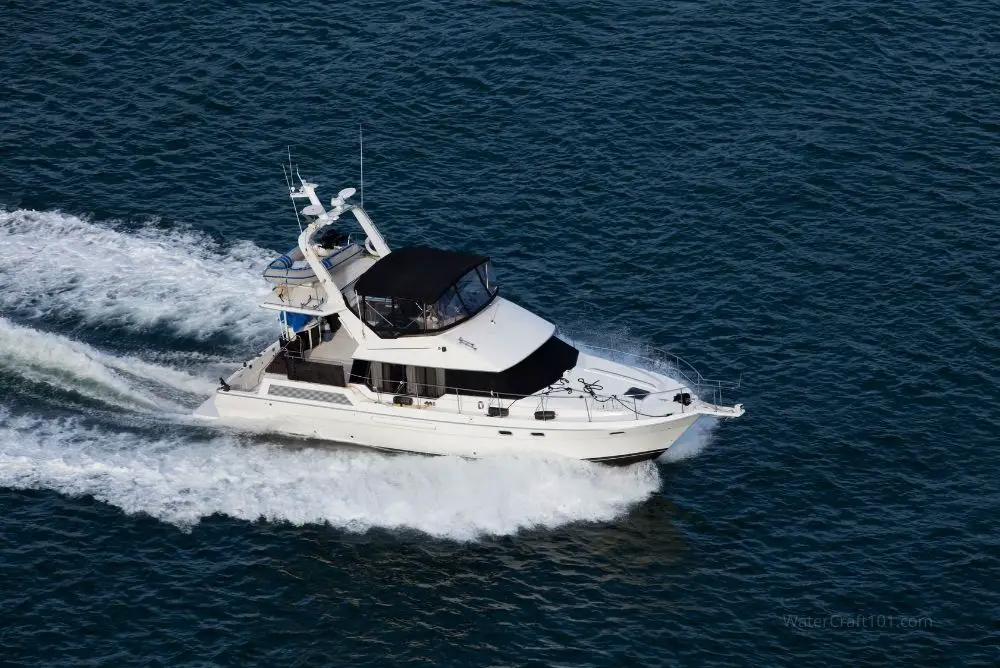
Are There Any Places to Stop on the Way to Hawaii?
Crossing from California to Hawaii is considered to be one of the longest routes you can take without encountering any nearby land. There’s really nothing between California and Hawaii but open ocean and a whole lot of water. Plan on being on the boat until you reach your destination.
Conclusion
Only 0.001% of boat owners would actually attempt to cross to Hawaii on their own boat. Reaching the destination isn’t a big deal if you have a large enough boat. It’s the return trip which will be more troublesome. Make sure that once you reach Hawaii, that you are prepared in advance for the long return trip.
If you feel you have the right experience and a solid boat, boating to Hawaii is quite possible, plus you’ll have some great stories to tell when you get back. Boat safe and be happy!
